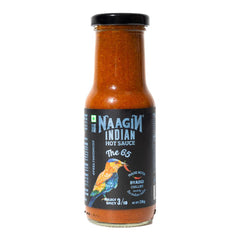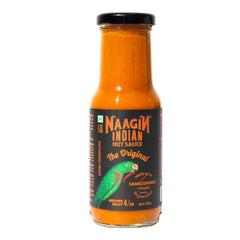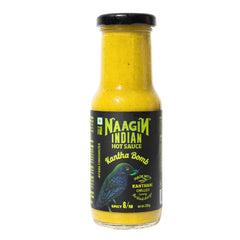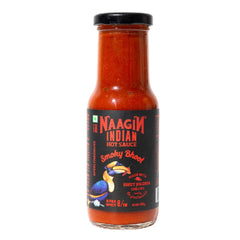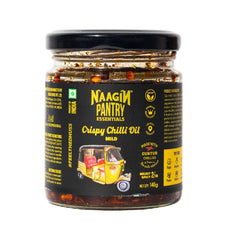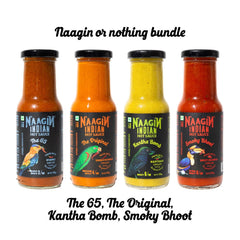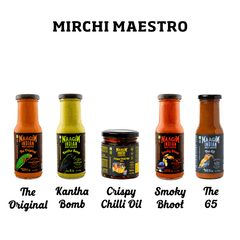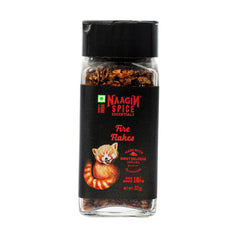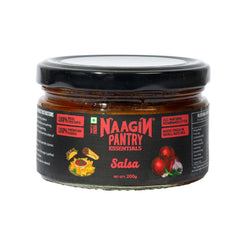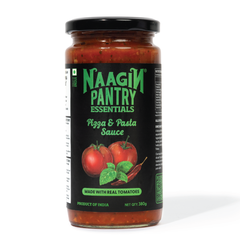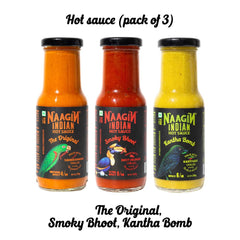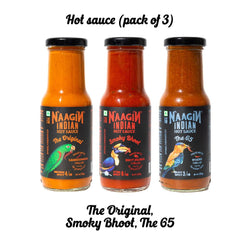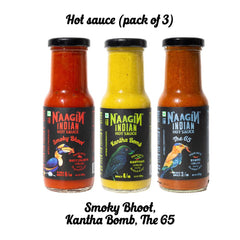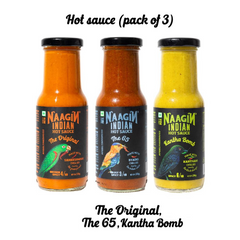
India, a land of vibrant spices and bold flavours, boasts a treasure trove of chillies that go far beyond the infamous Bhut Jolokia (Ghost Pepper).
While Bhut Jolokia holds a fiery reputation, it's just one facet of the incredible diversity that Indian Chillies offer. From smoky to sweet, fruity to floral, these chillies add a symphony of taste to regional cuisines across the country.
Let's embark on a journey to explore some of India's most unique and delicious chillies, along with their Scoville Heat Units (SHU) for reference:
Top 7 Different Types Of Chillies In India
1. Kanthari (SHU: 30,000 - 100,000):
Hailing from Kerala in South India, Kanthari is small and red, with a complex flavour profile.
It packs a moderate heat but is known for its distinct citrusy and smoky notes. Kanthari is a key ingredient in the fiery red Kerala Fish Curry, adding a unique depth of flavour.
2. Guajillo (SHU: 2,500 - 5,000):
Primarily cultivated in Maharashtra, Goa, and Karnataka, Guajillo chillies are heart-shaped and deep red when ripe.
Unlike many Indian chillies, Guajillo is known for its earthy and fruity aroma, with a mild to medium heat. It's commonly used in dry masalas (spice mixes) and adds a subtle smokiness to curries and stews.
3. Byadagi (SHU: 8,000 - 15,000):
Taking its name from the town of Byadagi in Karnataka, this long, slender chilli is known for its fiery punch.
Byadagi chillies are typically dried and ground into a fiery red powder that adds a significant kick to curries and chutneys. The powder's deep red colour is also used to add a vibrant hue to regional dishes.
4. Sankeshwari (SHU: 1,000 - 3,000):
This unique chilli, found in Maharashtra, is named after the town of Sankeshwar. Unlike their fiery cousins, Sankeshwari chillies are known for their mild heat and intense fruity flavour.
They are often pickled or stuffed with a peanut-coconut mixture, making for a delicious and slightly spicy appetisers.
5. Jwala (SHU: 100,000 - 250,000):
Grown primarily in Gujarat, Jwala Chillies are small and green, with a deceptively mild appearance. However, don't be fooled! Jwala packs a serious punch, often ranking high on the Scoville scale.
It's used sparingly in curries and chutneys, adding a burst of heat and a pungent aroma.
6. Kashmiri Lal Mirch (SHU: 1,000 - 2,000):
Hailing from Kashmir, this deep red chilli is prized for its rich colour and unique flavour profile.
Kashmiri Lal Mirch offers a mild heat but adds a beautiful crimson hue and a smoky, earthy aroma to Rogan Josh and other Kashmiri curries.
7. Raja Mirchi (SHU: 25,000 - 50,000):
This long, green chilli, originating in Andhra Pradesh, is a staple in South Indian cuisine. Raja Mirchi brings a moderate heat with a slightly bitter taste.
It's often used fresh in curries, chutneys, and sambar (a lentil stew), adding a vibrant green colour and a distinct depth of flavour.
These are just a taste (quite literally!) of the incredible diversity of Indian chillies. Each region boasts its own unique varieties, used not just for heat but to add layers of complexity and aroma to regional dishes. From the fragrant Kanthari to the fiery Byadagi, Indian chillies are an essential part of the country's culinary heritage.
So, next time you explore Indian cuisine, look beyond the fiery reputation of Bhut Jolokia. Ask about the chilies used in your dish, discover their unique flavours, and appreciate the symphony of tastes that these incredible ingredients bring to the table.


